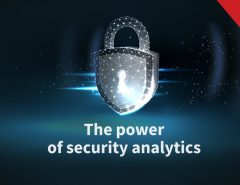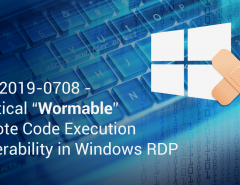Today the economy is all about data. All the business financial information, customer information, Intellectual property information, and all other information about the business is stored in digital format. All this information is data. In a pre-digital era, the data was in physical paper format. Locked behind doors and walls, it was safe from theft and misuse. Someone had to be physically present to break in and steal the paper information. However, in the digital world, the information can be hacked remotely. It can be hacked when it is static and residing on servers and databases and when it is motion, between two machines. One of the best ways to secure all data is to encrypt it. Encrypted data, even if stolen is worthless without the key. All that thief sees is a jumbled up string of characters. Encryption really protects data from misuse.
What is Encryption?
Encryption is basically a formula that turns data into a secret code. The formula or ‘encryption algorithm’ uses a string of characters known as a ‘key’ to perform the encryption calculation and generate the secret code. The larger the key, the harder is the secret code to break.
Encryption Algorithm: Cryptography, or art of encrypting data, relies primarily on the formula that takes the plain text and converts it into another format, which is ciphertext. For example, advancing all the characters by two as they are in sequence in the alphabet is an algorithm. Thus, ‘Encryption’ becomes ‘gpetarvkqp’, a meaningless string of characters. Modern algorithms are an extremely complex set of formulae. Some of these algorithms are secret while many of them are generally known to the public. The strength of algorithm comes from the largest key it can support to encode and decode. As of 2017, 4096-bit key is one of the largest key supported by the commercially available algorithm.
Encryption Key: This is the heart of any cryptographic system. This strength of this key decides the complexity of breaking the code. Larger the key more is the time required to break the code. For example cracking a 128-bit encryption is 4,700,000,000,000,000,000,000 (4.7 sextillion) times more difficult than cracking a 56-bit encryption. This is pretty good for today’s commercial computing and networking requirements. As the computing power increases, this too will become less secure and larger keys will be used.
Common types of encryption
There are two primary kinds of encryption: asymmetric encryption, also known as public key encryption and symmetric encryption, which is better known as secret key encryption.
Secret key encryption: In this kind, a common encryption key is shared between the sender and receiver of the data. The challenge here is to transmit the key securely between two parties. Two common types of encryption using this method are:
- Data Encryption Standard (DES): In this data in blocks of 64 bits is encrypted using a 56-bit key.
- International data encryption algorithm: This uses a 128-bit key on a 64-bit block of data.
Public key encryption: In this method, each person has two keys: A public key and a private key. The public key is published and the private key is kept secret. Messages are encoded using the recipient’s public key and it can only be decoded using the recipient’s private key. Thus, there is no need to share a common key over a secure channel. No private key is ever transmitted on any network. The two most used algorithms that use this technique are:
- RSA: Used for authentication and encryption
- PGP (Pretty Good Privacy): Generally used to secure emails.
Some other well-known encryption algorithms based on above two methods are:
- Skipjack: Uses 80-bit encryption and is designed to run on tamper-proof hardware.
- Data Encryption Standard (DES): uses the 56-bit key. It is considered weak by today’s standard. It has been broken in less than 24 hours.
- Triple DES: This technique uses three successive DES operations to provide stronger encryption. (That is encryption over encryption. The First level of decryption also produces garbage). This method is considered to be secure for practical purposes. It is now superseded by Advanced Encryption Standard.
- Advanced Encryption Standard (AES): This method was developed by National Institute of Standards and Technology (NIST) with the collaboration of 12 countries. It is one the most advanced algorithm that uses 128, 192 or 256-bit encryption key.
Data Encryption should not be confused as the only solution required for cybersecurity. The threat of network attacks, data corruption, data erosion, Ransomware etc still exists as they are not designed to steal data but make data unusable for the owner. However, whenever there is even the slightest possibility of data being stolen, encryption is the best defense.
As an IT security partner for your business, Seqrite provides comprehensive endpoint security from advanced cyber threats. To know more, visit our website or




